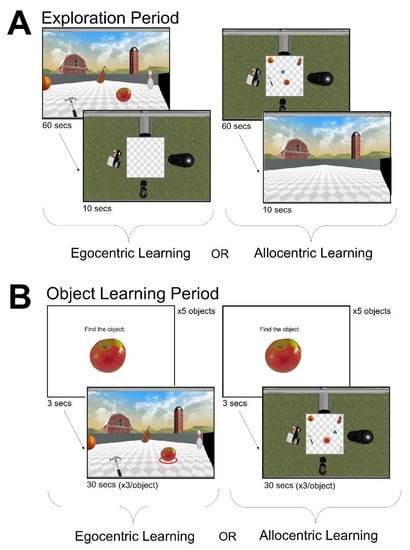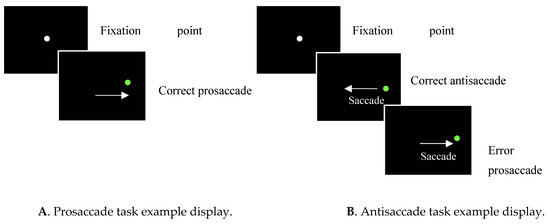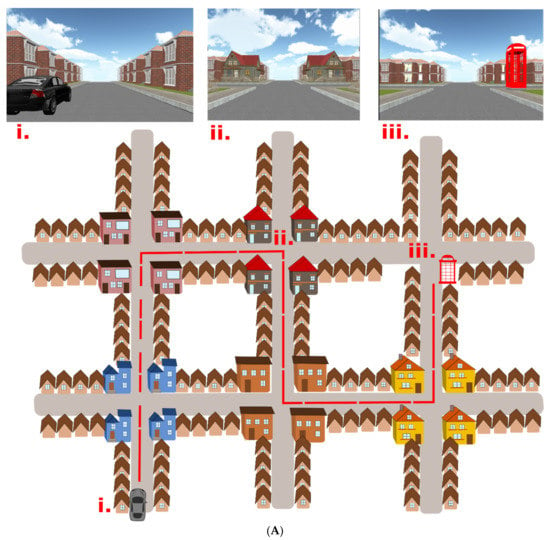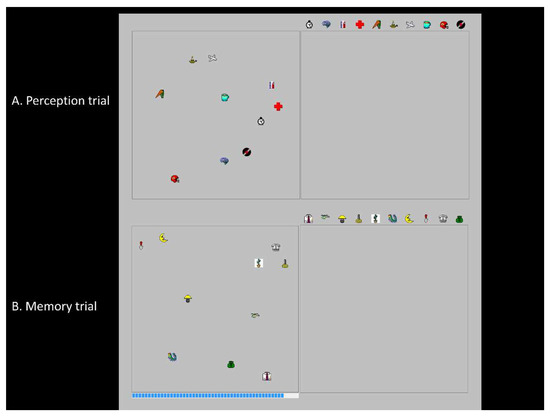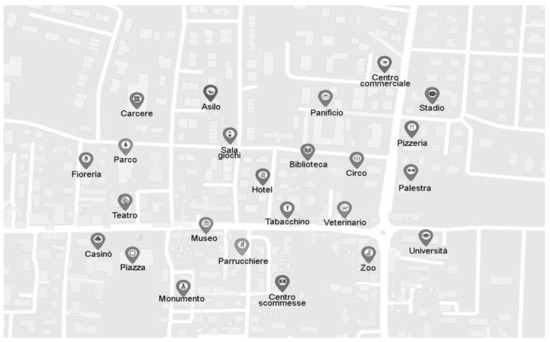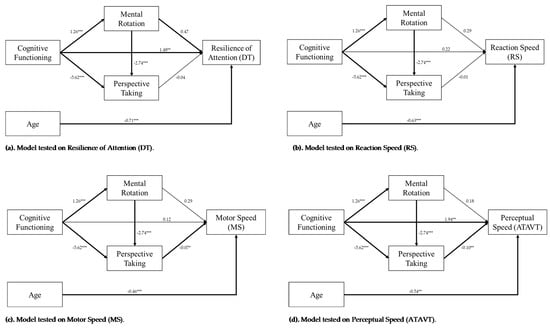Visuospatial Function in Early Alzheimer’s Disease, Healthy Elderly and MCI People
Share This Topical Collection
Editor
 Prof. Dr. Tina Iachini
Prof. Dr. Tina Iachini
 Prof. Dr. Tina Iachini
Prof. Dr. Tina Iachini
E-Mail
Website
Guest Editor
Laboratory of Cognitive Science and Immersive Virtual Reality, CS-IVR, Department of Psychology, University of Campania Luigi Vanvitelli, Viale Ellittico, 31, 81100 Caserta, Italy
Interests: cognitive psychology; cognitive science; environmental psychology; blindness; social cognition; imagery; spatial memory
Special Issues, Collections and Topics in MDPI journals
Topical Collection Information
Dear Colleagues,
Experimental and clinical research has long been engaged in an effort to identify the prodromal cognitive signs of Alzheimer’s disease (AD). Given the prevalence of visuospatial deficits in the early stages of AD and in a preclinical stage, such as mild cognitive impairment (MCI), much research has focused on visuospatial abilities in these populations. However, it remains unclear which visuospatial components exhibit normal age-related decline, which are preserved, and which deficits may be an early marker of conversion to AD.
From a perspective focused on prediction and prevention strategies, the purpose of this Special Issue of Brain Sciences (IF 3.32) is to report up-to-date knowledge about visuospatial functions in small-scale and large-scale settings in normal aging, MCI, and AD. It aims to present studies that broaden the perspective on early signs of AD to include several cognitive-affective factors related to visuospatial function and memory complaints and to suggest new directions for future research, clinical evaluation, and potentiation training.
We invite you to submit original research articles, analytical reviews, and meta-analyses of previous literature.
Prof. Dr. Tina Iachini
Guest Editor
Manuscript Submission Information
Manuscripts should be submitted online at www.mdpi.com by registering and logging in to this website. Once you are registered, click here to go to the submission form. Manuscripts can be submitted until the deadline. All submissions that pass pre-check are peer-reviewed. Accepted papers will be published continuously in the journal (as soon as accepted) and will be listed together on the collection website. Research articles, review articles as well as short communications are invited. For planned papers, a title and short abstract (about 100 words) can be sent to the Editorial Office for announcement on this website.
Submitted manuscripts should not have been published previously, nor be under consideration for publication elsewhere (except conference proceedings papers). All manuscripts are thoroughly refereed through a single-blind peer-review process. A guide for authors and other relevant information for submission of manuscripts is available on the Instructions for Authors page. Brain Sciences is an international peer-reviewed open access monthly journal published by MDPI.
Please visit the Instructions for Authors page before submitting a manuscript.
The Article Processing Charge (APC) for publication in this open access journal is 2200 CHF (Swiss Francs).
Submitted papers should be well formatted and use good English. Authors may use MDPI's
English editing service prior to publication or during author revisions.
Keywords
- Visuospatial function
- Alzheimer’s disease
- Mild cognitive impairment
- Normal aging
- Memory complaints
Published Papers (7 papers)
2021
Open AccessArticle
Flexible Use of Spatial Frames of Reference for Object–Location Memory in Older Adults
by
Natalia Ladyka-Wojcik, Rosanna K. Olsen, Jennifer D. Ryan and Morgan D. Barense
Cited by 4 | Viewed by 3550
Abstract
In memory, representations of spatial features are stored in different reference frames; features relative to our position are stored egocentrically and features relative to each other are stored allocentrically. Accessing these representations engages many cognitive and neural resources, and so is susceptible to
[...] Read more.
In memory, representations of spatial features are stored in different reference frames; features relative to our position are stored egocentrically and features relative to each other are stored allocentrically. Accessing these representations engages many cognitive and neural resources, and so is susceptible to age-related breakdown. Yet, recent findings on the heterogeneity of cognitive function and spatial ability in healthy older adults suggest that aging may not uniformly impact the flexible use of spatial representations. These factors have yet to be explored in a precisely controlled task that explicitly manipulates spatial frames of reference across learning and retrieval. We used a lab-based virtual reality task to investigate the relationship between object–location memory across frames of reference, cognitive status, and self-reported spatial ability. Memory error was measured using Euclidean distance from studied object locations to participants’ responses at testing. Older adults recalled object locations less accurately when they switched between frames of reference from learning to testing, compared with when they remained in the same frame of reference. They also showed an allocentric learning advantage, producing less error when switching from an allocentric to an egocentric frame of reference, compared with the reverse direction of switching. Higher MoCA scores and better self-assessed spatial ability predicted less memory error, especially when learning occurred egocentrically. We suggest that egocentric learning deficits are driven by difficulty in binding multiple viewpoints into a coherent representation. Finally, we highlight the heterogeneity of spatial memory performance in healthy older adults as a potential cognitive marker for neurodegeneration, beyond normal aging.
Full article
►▼
Show Figures
Open AccessArticle
From aMCI to AD: The Role of Visuo-Spatial Memory Span and Executive Functions in Egocentric and Allocentric Spatial Impairments
by
Tina Iachini, Francesco Ruotolo, Alessandro Iavarone, Michele Carpinelli Mazzi and Gennaro Ruggiero
Cited by 5 | Viewed by 2405
Abstract
A difficulty in encoding spatial information in an egocentric (i.e., body-to-object) and especially allocentric (i.e., object-to-object) manner, and impairments in executive function (EF) are typical in amnestic mild cognitive impairment (aMCI) and Alzheimer’s disease (AD). Since executive functions are involved in spatial encodings,
[...] Read more.
A difficulty in encoding spatial information in an egocentric (i.e., body-to-object) and especially allocentric (i.e., object-to-object) manner, and impairments in executive function (EF) are typical in amnestic mild cognitive impairment (aMCI) and Alzheimer’s disease (AD). Since executive functions are involved in spatial encodings, it is important to understand the extent of their reciprocal or selective impairment. To this end, AD patients, aMCI and healthy elderly people had to provide egocentric (What object was closest to you?) and allocentric (What object was closest to object X?) judgments about memorized objects. Participants’ frontal functions, attentional resources and visual-spatial memory were assessed with the Frontal Assessment Battery (FAB), the Trail Making Test (TMT) and the Corsi Block Tapping Test (forward/backward). Results showed that ADs performed worse than all others in all tasks but did not differ from aMCIs in allocentric judgments and Corsi forward. Regression analyses showed, although to different degrees in the three groups, a link between attentional resources, visuo-spatial memory and egocentric performance, and between frontal resources and allocentric performance. Therefore, visuo-spatial memory, especially when it involves allocentric frames and requires demanding active processing, should be carefully assessed to reveal early signs of conversion from aMCI to AD.
Full article
►▼
Show Figures
Open AccessReview
The Potential of Naturalistic Eye Movement Tasks in the Diagnosis of Alzheimer’s Disease: A Review
by
Megan Rose Readman, Megan Polden, Melissa Chloe Gibbs, Lettie Wareing and Trevor J. Crawford
Cited by 20 | Viewed by 5656
Abstract
Extensive research has demonstrated that eye-tracking tasks can effectively indicate cognitive impairment. For example, lab-based eye-tracking tasks, such as the antisaccade task, have robustly distinguished between people with Alzheimer’s disease (AD) and healthy older adults. Due to the neurodegeneration associated with AD, people
[...] Read more.
Extensive research has demonstrated that eye-tracking tasks can effectively indicate cognitive impairment. For example, lab-based eye-tracking tasks, such as the antisaccade task, have robustly distinguished between people with Alzheimer’s disease (AD) and healthy older adults. Due to the neurodegeneration associated with AD, people with AD often display extended saccade latencies and increased error rates on eye-tracking tasks. Although the effectiveness of using eye tracking to identify cognitive impairment appears promising, research considering the utility of eye tracking during naturalistic tasks, such as reading, in identifying cognitive impairment is limited. The current review identified 39 articles assessing eye-tracking distinctions between people with AD, mild cognitive impairment (MCI), and healthy controls when completing naturalistic task (reading, real-life simulations, static image search) or a goal-directed task involving naturalistic stimuli. The results revealed that naturalistic tasks show promising biomarkers and distinctions between healthy older adults and AD participants, and therefore show potential to be used for diagnostic and monitoring purposes. However, only twelve articles included MCI participants and assessed the sensitivity of measures to detect cognitive impairment in preclinical stages. In addition, the review revealed inconsistencies within the literature, particularly when assessing reading tasks. We urge researchers to expand on the current literature in this area and strive to assess the robustness and sensitivity of eye-tracking measures in both AD and MCI populations on naturalistic tasks.
Full article
►▼
Show Figures
Open AccessArticle
Spatial Navigation and Visuospatial Strategies in Typical and Atypical Aging
by
Martina Laczó, Jan M. Wiener, Jana Kalinova, Veronika Matuskova, Martin Vyhnalek, Jakub Hort and Jan Laczó
Cited by 11 | Viewed by 3870
Abstract
Age-related spatial navigation decline is more pronounced in patients with mild cognitive impairment (MCI) and Alzheimer’s disease (AD) dementia. We used a realistic-looking virtual navigation test suite to analyze different aspects of visuospatial processing in typical and atypical aging. A total of 219
[...] Read more.
Age-related spatial navigation decline is more pronounced in patients with mild cognitive impairment (MCI) and Alzheimer’s disease (AD) dementia. We used a realistic-looking virtual navigation test suite to analyze different aspects of visuospatial processing in typical and atypical aging. A total of 219 older adults were recruited from the Czech Brain Aging Study cohort. Cognitively normal older adults (CN;
n = 78), patients with amnestic MCI (
n = 75), and those with mild AD dementia (
n = 66) underwent three navigational tasks, cognitive assessment, and brain MRI. Route learning and wayfinding/perspective-taking tasks distinguished the groups as performance and learning declined and specific visuospatial strategies were less utilized with increasing cognitive impairment. Increased perspective shift and utilization of non-specific strategies were associated with worse task performance across the groups. Primacy and recency effects were observed across the groups in the route learning and the wayfinding/perspective-taking task, respectively. In addition, a primacy effect was present in the wayfinding/perspective-taking task in the CN older adults. More effective spatial navigation was associated with better memory and executive functions. The results demonstrate that a realistic and ecologically valid spatial navigation test suite can reveal different aspects of visuospatial processing in typical and atypical aging.
Full article
►▼
Show Figures
Open AccessFeature PaperArticle
Short Digital Spatial Memory Test Detects Impairment in Alzheimer’s Disease and Mild Cognitive Impairment
by
Jackie M. Poos, Ineke J. M. van der Ham, Anna E. Leeuwis, Yolande A. L. Pijnenburg, Wiesje M. van der Flier and Albert Postma
Cited by 10 | Viewed by 3320
Abstract
Background: Impairment in navigation abilities and object location memory are often seen in early-stage Alzheimer’s Disease (AD), yet these constructs are not included in standard neuropsychological assessment. We investigated the differential ability of a short digital spatial memory test in mild AD dementia
[...] Read more.
Background: Impairment in navigation abilities and object location memory are often seen in early-stage Alzheimer’s Disease (AD), yet these constructs are not included in standard neuropsychological assessment. We investigated the differential ability of a short digital spatial memory test in mild AD dementia and mild cognitive impairment (MCI). Methods: 21 patients with AD dementia (66.9 ± 6.9; 47% female), 22 patients with MCI (69.6 ± 8.3; 46% female) and 21 patients with subjective cognitive decline (SCD) (62.2 ± 8.9; 48% female) from the Amsterdam Dementia Cohort performed the Object Location Memory Test (OLMT), consisting of a visual perception and memory trial, and the Virtual Tübingen (VT) test, consisting of a scene recognition, route continuation, route ordering and distance comparison task. The correlations with other cognitive domains were examined. Results: Patients with mild AD dementia (Z: −2.51 ± 1.15) and MCI (Z: −1.81 ± 0.92) performed worse than participants with SCD (Z: 0.0 ± 1.0) on the OLMT. Scene recognition and route continuation were equally impaired in patients with AD dementia (Z: −1.14 ± 0.73; Z: −1.44 ± 1.13) and MCI (Z: −1.37 ± 1.25; Z: −1.21 ± 1.07). Route ordering was only impaired in patients with MCI (Z: −0.82 ± 0.78). Weak to moderate correlations were found between route continuation and memory (r(64) = 0.40,
p < 0.01), and between route ordering and attention (r(64) = 0.33,
p < 0.01), but not for the OLMT. Conclusion: A short digital spatial memory test battery was able to detect object location memory and navigation impairment in patients with mild AD dementia and MCI, highlighting the value of incorporating such a test battery in standard neuropsychological assessment.
Full article
►▼
Show Figures
Open AccessArticle
Map Learning in Aging Individuals: The Role of Cognitive Functioning and Visuospatial Factors
by
Veronica Muffato, Laura Miola, Francesca Pazzaglia and Chiara Meneghetti
Cited by 5 | Viewed by 2247
Abstract
Aging coincides with a decline in map learning ability, but it is unclear to what extent different aspects of the mental representation are susceptible. The present study aimed to investigate knowledge about landmarks, their positions and distances (categorical and distance relations, respectively) in
[...] Read more.
Aging coincides with a decline in map learning ability, but it is unclear to what extent different aspects of the mental representation are susceptible. The present study aimed to investigate knowledge about landmarks, their positions and distances (categorical and distance relations, respectively) in relation to aging as well as cognitive functioning (measured with the Montreal Cognitive Assessment [MoCA]), visuospatial abilities, and self-reported wayfinding inclinations. Thirty young adults and 60 older adults (30 aged 63–74 and 30 aged 75–86) learned a map, freely recalled the landmarks and performed a map drawing task (considering the number of landmarks missing, position accuracy and distance accuracy). Before that, older participants were also assessed regarding their general cognitive functioning (MoCA) and a series of visuospatial measures. The results show age-related differences among adults in recalling landmarks and in both categorical and distance relations, with a worsening of performance of old-olds only in the former. Older adults’ MoCA score related to accuracy in the three measures, and an additional role of spatial anxiety was found for distance accuracy. Above and beyond the age-related decline, the quality of older people’s spatial mental representation is related to higher general cognitive level and lower spatial anxiety.
Full article
►▼
Show Figures
Open AccessArticle
Cognitive Efficiency and Fitness-to-Drive along the Lifespan: The Mediation Effect of Visuospatial Transformations
by
Luigi Tinella, Antonella Lopez, Alessandro Oronzo Caffò, Francesco Nardulli, Ignazio Grattagliano and Andrea Bosco
Cited by 21 | Viewed by 3624
Abstract
The way people represent and transform visuospatial information affects everyday activities including driving behavior. Mental rotation and perspective taking have recently been found to predict cognitive prerequisites for fitness-to-drive (FtD). We argue that the relationship between general cognitive status and FtD is mediated
[...] Read more.
The way people represent and transform visuospatial information affects everyday activities including driving behavior. Mental rotation and perspective taking have recently been found to predict cognitive prerequisites for fitness-to-drive (FtD). We argue that the relationship between general cognitive status and FtD is mediated by spatial transformation skills. Here, we investigated the performance in the Mental Rotation Test (MRT) and the Perspective-Taking Test (PT) of 175 male active drivers (aged from 18 to 91 years), by administering the Montreal Cognitive Assessment (MoCA) to measure their global cognitive functioning. All participants were submitted to a computerized driving assessment measuring resilience of attention (DT), reaction speed (RS), motor speed (MS), and perceptual speed (ATAVT). Significant results were found for the effect of global cognitive functioning on perceptual speed through the full mediation of both mental rotation and perspective-taking skills. The indirect effect of global cognitive functioning through mental rotation was only found to significantly predict resilience of attention whereas the indirect effect mediated by perspective taking only was found to significantly predict perceptual speed. Finally, the negative effect of age was found on each driving measure. Results presented here, which are limited to male drivers, suggest that general cognitive efficiency is linked to spatial mental transformation skills and, in turn, to driving-related cognitive tasks, contributing to fitness-to-drive in the lifespan.
Full article
►▼
Show Figures






